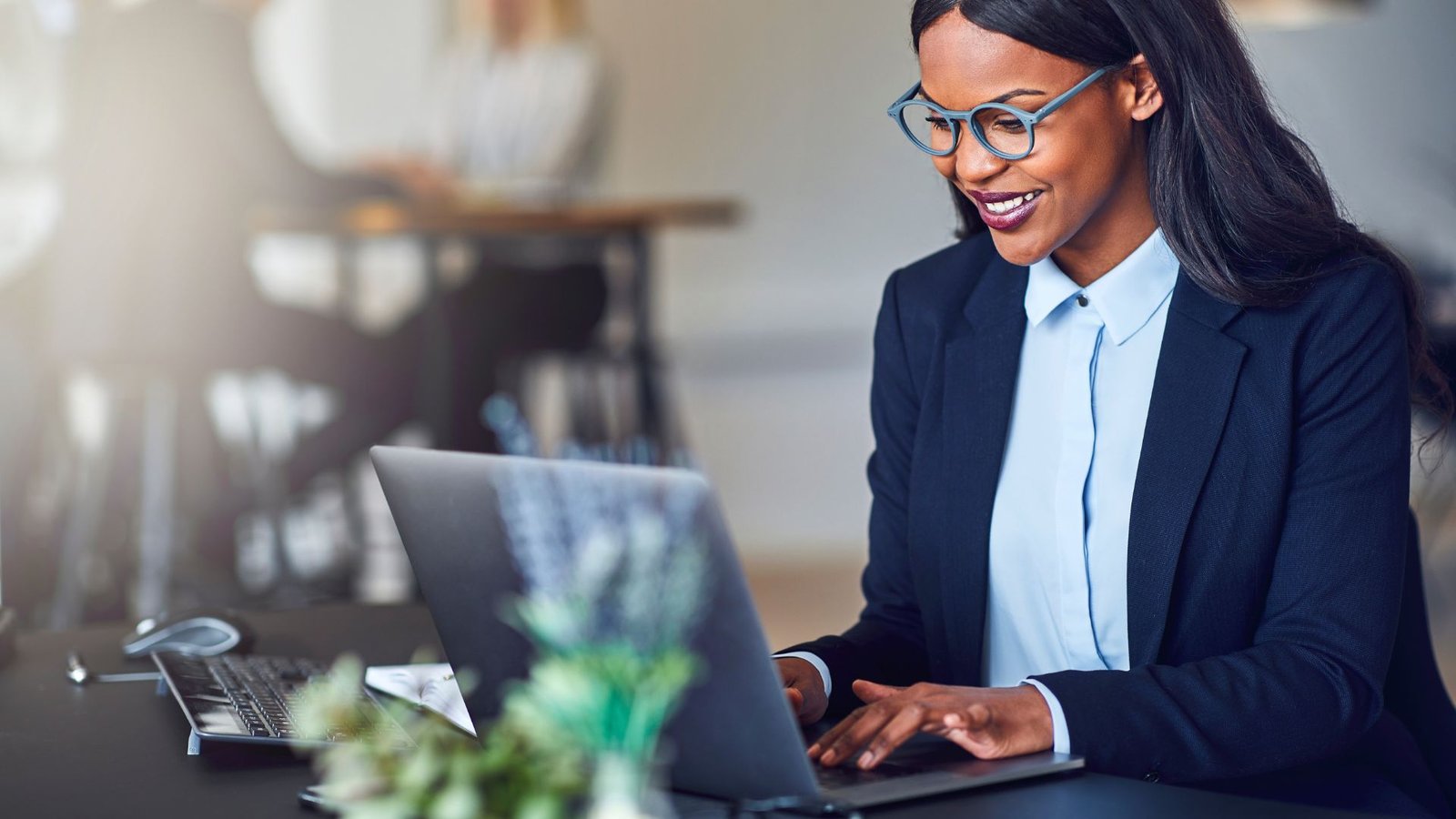On Cloud ERP Solutions – A Saviour?
In today’s fast-paced business environment, it is essential to stay ahead of the curve when it comes to technology. One way to do this is by implementing an On Cloud ERP solution. This guide covers everything you need to know about On Cloud ERP solutions, from basics to measuring implementation success.
Understanding Cloud ERP Solutions
In recent years, Cloud ERP solutions led by providers like SAP and Oracle focus on reducing costs and enhancing usability. They love to show that On Cloud solutions are transforming how businesses manage their daily operations and strategic planning.
These platforms are hosted in the cloud, centralizing core business processes like accounting, inventory management, and CRM.
The key feature of cloud ERP solutions is their accessibility, as they can be accessed globally with an internet connection. This accessibility supports remote work and ensures critical business data and functionalities are always available, regardless of location. Approximately 40% of businesses are exploring incorporating IoT technologies into their ERP systems

Another essential aspect of cloud ERP systems is their modularity. Cloud ERP solutions offer flexibility, allowing businesses to choose and combine modules as needed, without significant on-premises infrastructure.
This modular approach allows businesses to customize their ERP system as needs evolve, avoiding costly and time-consuming upgrades.
Scalability Is Great!
Moreover, cloud ERP solutions are designed with scalability in mind. As businesses grow, their ERP system can seamlessly scale to accommodate new users, transactions, and data without compromising performance. This scalability ensures that businesses can maintain efficiency and responsiveness even as they expand. The cloud ERP market is expected to reach $37.7 billion by 2024.
Finally, cloud ERP solutions provide real-time data and insights. Data stored in the cloud enables access to real-time information, improving decision-making and allowing quick adjustments to business strategies as market conditions change.
Adopting cloud ERP solutions harnesses cloud power for efficiency, flexibility, and deeper insights, fostering growth and competitiveness in the digital age.
Why Move Your ERP On Cloud?
Transitioning your ERP to the cloud enhances efficiency, agility, and cost-effectiveness in business operations. The inherent flexibility of cloud-based solutions allows businesses of any size to adapt more quickly to market changes and customer demands, positioning them for better competitiveness in their respective industries.
Cloud ERP systems reduce costs by eliminating substantial upfront investments in hardware and infrastructure. Instead, businesses can leverage a subscription-based model that scales with their usage and needs, significantly reducing both operational and capital expenses. This shift to a more predictable and manageable cost structure allows organizations to allocate resources more effectively, fostering innovation and growth.
Increased flexibility is another cornerstone benefit of moving your ERP to the cloud. Access to business systems and data anytime, anywhere enhances team collaboration, informs decision-makers with real-time insights, and improves responsiveness and planning.

Security is Key…
Moreover, cloud ERP systems provide robust security features designed to protect sensitive business data against threats. Providers invest heavily in security protocols, including encryption and access controls, ensuring that your data is safeguarded in a way that might be difficult to replicate with on-premises solutions.
Cloud providers often meet strict compliance standards, streamlining adherence and reducing the regulatory burden on your business.
Migrating your ERP to the cloud boosts operational efficiency, cuts costs, improves data security and compliance, and provides scalability for growth in the digital age.
Evaluating Your Business Needs
Embarking on the journey toward selecting an On Cloud ERP solution necessitates a meticulous evaluation of your business’s specific needs and aspirations. It’s not merely about adopting technology for the sake of modernization but ensuring that the solution you choose acts as a catalyst for achieving your strategic goals.
Begin by conducting an in-depth analysis of your organization’s size, which plays a pivotal role in determining the scale and complexity of the ERP system required. A smaller enterprise’s unique needs and resources influence choosing a scalable and cost-effective cloud ERP system, differing from larger corporations.
Next, scrutinize the complexity of your business processes. Understanding the intricacies of your operations will help identify the functionalities you need from an ERP system to enhance efficiency, streamline workflows, and improve decision-making processes. Selecting a cloud ERP solution that is comprehensive and adaptable to your business’s unique dynamics is crucial.

Managing Cost Based on your Budget
Additionally, budget constraints cannot be overlooked. While cloud ERP solutions offer a more predictable cost structure through subscription models, it’s imperative to assess the total cost of ownership and ensure it aligns with your financial capabilities. This includes considering not just the subscription fees but also any costs associated with implementation, customization, and ongoing support.
The evaluative process is crucial for selecting a cloud ERP solution that meets current needs and adapts as your business evolves. By thoroughly assessing these critical factors, you position your organization to leverage the full potential of cloud ERP technology for sustainable growth and competitive advantage.
Selecting the Right On Cloud ERP Provider
Choosing the ideal Cloud ERP provider is a critical step that demands careful consideration and due diligence. Here some steps to consider:
- Start by researching and compiling a list of providers that have a strong presence in your industry. Look for those with proven expertise and a track record of delivering successful outcomes for businesses similar to yours. Evaluate a provider’s fit by reviewing case studies and customer testimonials to gauge their ability to address your sector’s challenges.
- Consideration of customer support services is paramount. The quality of support can significantly impact the efficiency and effectiveness of your Cloud ERP system. Ensure that the provider offers comprehensive, 24/7 customer service, including access to knowledgeable and responsive technical support teams. This is crucial for resolving any issues quickly and minimizing downtime.
- Examine the pricing structure carefully. Transparent and flexible pricing that aligns with your business’s size and growth projections is essential. Be wary of hidden fees or costs that could escalate over time. Choose a provider with clear, scalable pricing options that suit current needs and allow for future expansion affordably.
- Finally, assess the scope of features and functionalities the provider offers. Ensure they align with your business’s immediate needs and have the capacity to evolve as your operations grow and change. Ensure the provider is willing to customize and configure the ERP system closely with your existing workflows and systems.
- Most importantly, please consider data residency. Having a provider that hosts the data locally, is very important. Hosting data locally is increasingly becoming a regulatory requirement to enhance data security and protection.
Select a Cloud ERP provider that offers a robust, scalable solution aligned with your business’s strategic goals and values. Evaluate providers against criteria to confidently choose one supporting your business’s growth and success in the digital era.

Planning Your Migration Strategy
- Creating a detailed and well-thought-out migration strategy is a critical component of moving your ERP system to the cloud. Start by forming a project team comprising key stakeholders and technical experts to ensure diverse perspectives in the planning phase. This team will be responsible for mapping out each phase of the migration, from initial data migration to full system deployment and post-launch support.
- Start by conducting a thorough inventory of your current data and processes to identify what will need to be migrated and any potential challenges that may arise during the process. This inventory will serve as the foundation for your migration plan, helping to prevent any overlooked elements that could disrupt business operations.
- Next, set clear milestones and deadlines for each stage of the migration. This timeline should be realistic and account for potential delays, ensuring that the project stays on track while minimizing impact on daily operations. Establishing a timeline enhances organizational communication, ensuring employees understand key dates and their responsibilities.
- Collaboration with your chosen cloud ERP provider during this phase is essential. Their expertise and experience can offer valuable insights into best practices for data migration, system testing, and training. They can also help identify any customizations or integrations required to ensure the new system aligns with your business processes.
- Finally, develop a comprehensive risk management plan. This should include contingency plans for data loss, system downtime, and any other potential risks identified during the planning phase. Proactive addressing of challenges ensures smoother transitions to new cloud ERP systems, fostering long-term success and operational efficiency.
Customizing Your On Cloud ERP Solution
- Customizing your cloud ERP solution is a pivotal step towards achieving operational excellence. This process involves tailoring the ERP to align seamlessly with your business’s unique processes, objectives, and challenges, not just fitting within a generic system. Engage in detailed discussions with your cloud ERP provider to identify specific areas where customization can significantly enhance efficiency and performance.
- Consider the intricacies of your workflow, the particular needs of your various departments, and any unique business practices that give you a competitive edge. Customization can range from simple user interface adjustments to complex algorithm modifications that automate and refine business processes. It is also an opportunity to ensure that the ERP solution grows alongside your business, adaptable to future requirements and innovations.
- Furthermore, assess the potential of integrating new functionalities that could open up opportunities for data analysis, customer service enhancement, and streamlined operations. Strategic customization plans invest in technology solutions as catalysts for business growth and efficiency, not just software installations. Engaging with your provider at this level ensures that your cloud ERP solution is not just a tool, but a strategic asset tailored to your business’s DNA.

Integrating With Existing Systems
- Achieving seamless operational harmony requires a meticulous approach to integrating your Cloud ERP solution with your existing systems. This step is indispensable for ensuring a smooth transition and maintaining the integrity of your operational workflow. The integration process should begin with a comprehensive analysis of your current technological ecosystem. Identify crucial software, applications, and platforms for daily operations, including CRM, e-commerce platforms, financial systems, and other specialized tools supporting your business.
- Once you have mapped out your existing systems, the next phase involves working closely with your Cloud ERP provider to develop a tailored integration plan. Prioritize seamless data flow between systems to minimize risks of data silos or inaccuracies disrupting business processes. It’s not just about connecting systems; it’s about creating a cohesive environment where data and processes coexist and complement each other efficiently.
- Furthermore, pay special attention to the technical aspects of the integration. This includes ensuring compatibility, setting up secure API connections, and implementing robust data transfer protocols. These technical considerations are critical for safeguarding data integrity and ensuring that your integrated systems communicate effectively.
Strategically integrating your Cloud ERP with existing systems creates a streamlined, efficient structure that supports objectives and drives business growth.
Security and Compliance in the Cloud
Navigating the intricate landscape of cloud security and regulatory compliance demands a proactive and informed approach.
- When transitioning your ERP system to the cloud, selecting a provider that prioritizes advanced security protocols is paramount. This includes the deployment of state-of-the-art encryption techniques to protect data both in transit and at rest, comprehensive access control measures to ensure only authorized users can access sensitive information, and continuous security audits to detect and mitigate potential vulnerabilities.
- Equally critical is the adherence to industry-specific regulations and standards. Ensure your cloud ERP aligns with GDPR for EU, HIPAA for US healthcare, and sector-specific standards. This compliance not only safeguards your data but also fortifies your company’s credibility and trustworthiness in the eyes of your clients and stakeholders.
Prioritize security measures and compliance protocols when choosing a cloud ERP for a secure, reliable, and compliant digital infrastructure. This strategic focus ensures the integrity of your data and the resilience of your operations in the cloud environment, offering peace of mind in a digitally interconnected world.

Training Your Team on the New System
Ensuring your team is proficient with the newly implemented cloud ERP solution is crucial for harnessing its full potential.
- Initiating a well-structured training program is fundamental to this process. This should encompass a variety of learning methods tailored to different learning styles, including hands-on workshops, video tutorials, and detailed documentation. Break down ERP functionalities into manageable segments for employees to effectively understand and apply in their daily tasks.
- Emphasize real-world scenarios that your team is likely to encounter, facilitating a practical understanding of how the ERP solution can streamline operations and resolve challenges.
- Moreover, designate ERP champions within your team—individuals who demonstrate advanced understanding and enthusiasm for the new system. Champions offer peer support, aiding in troubleshooting and fostering a collaborative, learning-oriented culture.
- Regular follow-up sessions to refresh knowledge and introduce new features as the system evolves are also advisable. A proactive approach ensures team proficiency and motivation to explore the full capabilities of the cloud ERP solution.
Measuring the Success of Your On Cloud ERP Implementation
Evaluating the success of your On Cloud ERP implementation is pivotal for understanding its real-world impact on your business operations.
- Key performance indicators (KPIs) should be established prior to deployment, enabling a clear analysis of outcomes post-implementation. KPIs could cover operational efficiency, financial performance (cost reductions), and customer experience (feedback and service metrics). Additionally, employee productivity and engagement can serve as indicators of how well the system has been integrated into daily workflows.
- Benchmark these metrics against your objectives to ascertain whether the cloud ERP solution is meeting, exceeding, or falling short of expectations. A data-driven approach quantifies ERP value, identifies optimization areas, and ensures continuous benefits aligned with strategic business goals.
If you liked this article, please share it and subscribe to my website. For consulting work, please visit my website, Shift Gear and I would be glad to help you in your requirement.
Check this also – 10 Steps: Achieving CRM Go-Live Success – Shift Gear X – Build Your Future Net Worth Now









